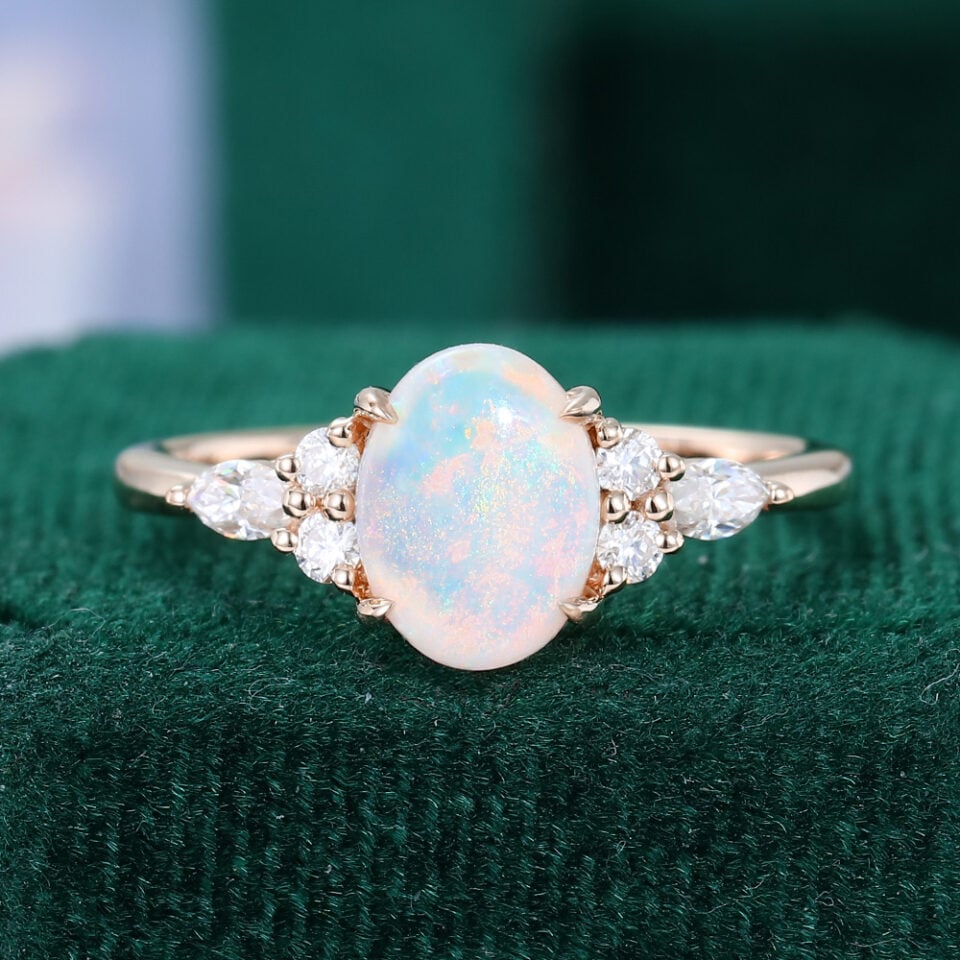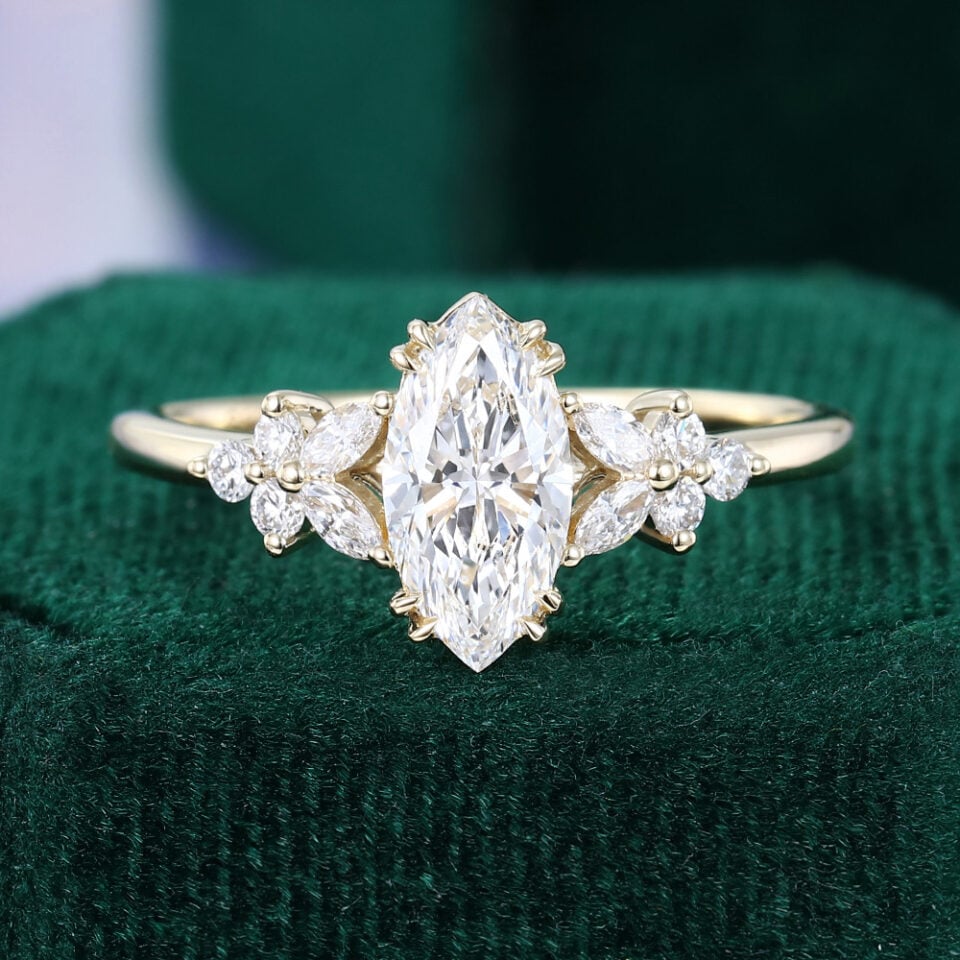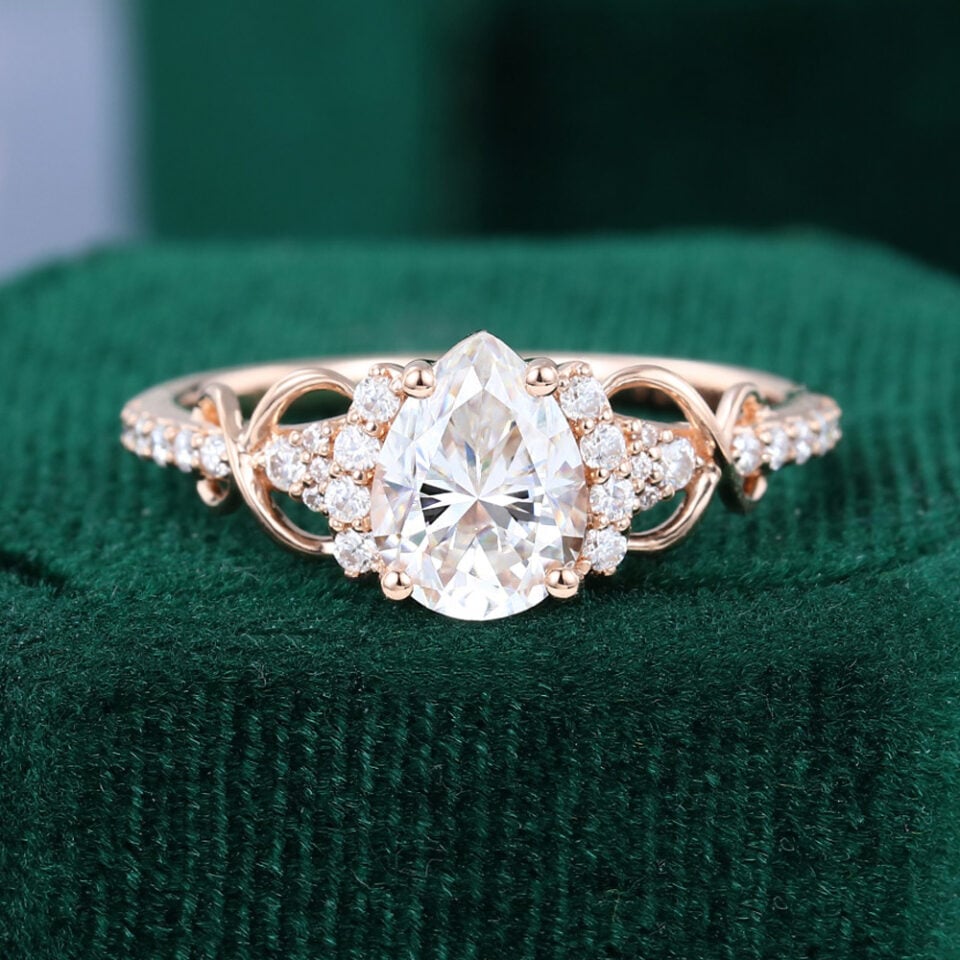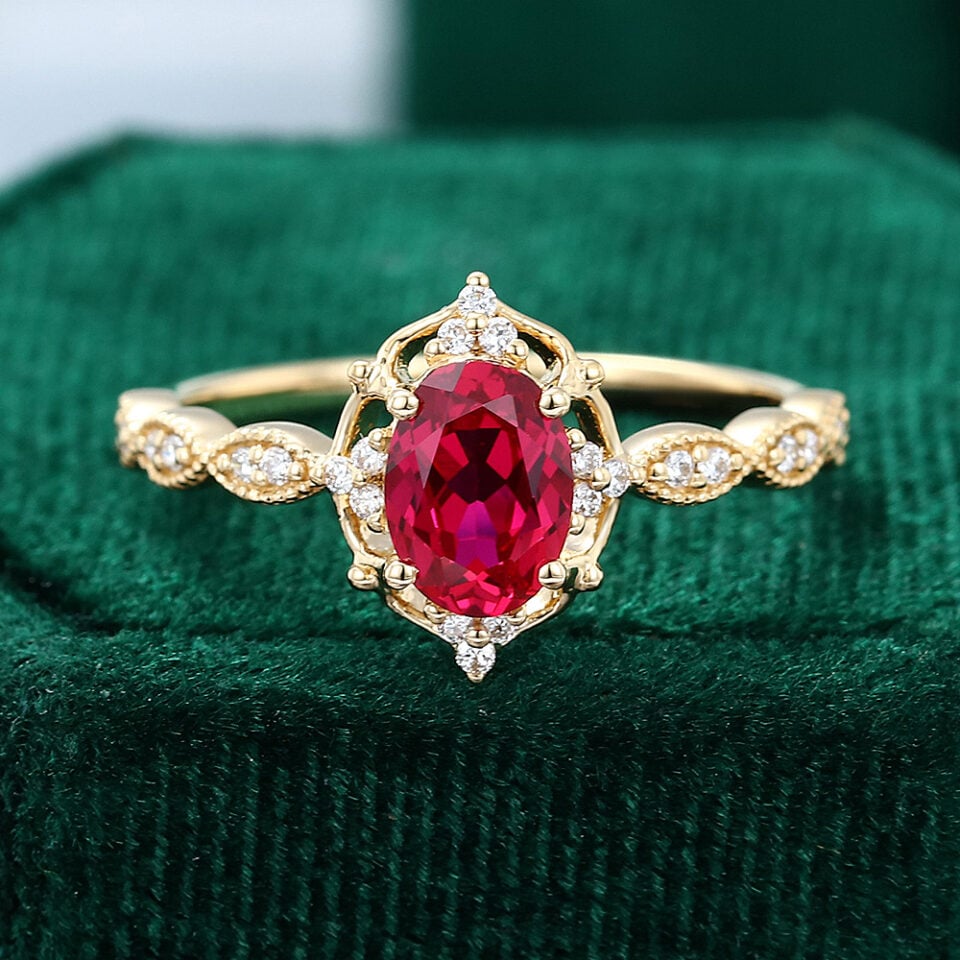In the world of jewelry, the way a gemstone is cut not only affects its appearance and brilliance but also determines its style, value, and intended use. Cabochon and faceted gemstones are two classic and commonly used cutting styles, each with its own unique charm, making them suitable for different design concepts and wearing needs. This article compares these two types of gemstone cuts from multiple perspectives to help you make a more informed choice.
What is a Cabochon?
A cabochon cut, also known as a dome cut, refers to gemstones with a smooth, rounded top (dome-shaped) and typically a flat or slightly domed bottom. The most common shapes are round or oval, though they can also be triangular, rectangular, or other shapes. The height of the dome and the shape of the base can vary greatly—from shallow arches to high domes or even conical shapes—which affects the depth of color and how the stone is set.
Unlike faceted gemstones that require precise cutting, cabochons are shaped and highly polished to enhance the gem’s color and reflectivity.
What is a Faceted Gemstone?
Faceted gemstones are those that have been precisely cut and polished to create multiple geometric surfaces. This is the dominant cutting style in the gemstone industry. A standard faceted gemstone typically consists of three main parts: the crown, girdle, and pavilion. Some shapes also include a culet at the bottom (as shown in the diagram).

Faceted gems can be cut in various styles—rose cuts, step cuts, and brilliant cuts are the three major types, each producing distinct optical effects. Within each cutting style, there are also different shapes, with variations in the number and arrangement of facets, all of which influence the gem’s optical performance. The number of facets and the angles at which they are cut are carefully calculated and professionally designed to maximize brightness, sparkle, and fire. Ultimately, faceted gemstones achieve their brilliance, scintillation, and fire through these meticulously crafted surfaces.
Which Came First: Cabochon or Faceted Gemstones?
Cabochon gemstones have a longer history and are among the oldest and most traditional gemstone cutting methods. Before faceting techniques were developed, the cabochon was the default form of gemstone finishing. Even today, cabochon cuts remain the top choice for vintage-style jewelry.
Faceted gemstones initially only involved polishing the natural octahedral crystals of diamonds. It wasn’t until the 14th century that Europe developed true faceting techniques, beginning with the early rose cut. With ongoing scientific innovation and advancement, cutting techniques became more sophisticated, allowing for more refined angles and shapes. Today, gemstone cutting has reached an exceptional level of precision. Key milestones in faceting history include:
- Late 15th century: The introduction of the horizontal rotating cutting wheel allowed cutters to create complex geometric facets and arrangements.
- 17th century: The invention of the brilliant cut, which optimized sparkle and fire—still the most popular cut to this day.
- 20th century (1919): Marcel Tolkowsky mathematically calculated the “ideal” diamond cut angles. Combined with precision machinery and computer-aided design, this brought gemstone faceting to an unprecedented level of accuracy.
Cabochon vs. Faceted Gemstones: Optical Effects
Cabochon Gemstones
The purpose of a cabochon cut is not to produce sparkle or fire, but to highlight the gem’s internal color, patterns, and optical phenomena. This style relies on surface luster and special visual effects, typically producing soft sheen and limited light reflection.
Cabochon gemstones interact with light in unique ways, often showcasing special optical effects such as:
- Asterism: Star-like rays of light, often four-, six-, eight-, or even twelve-rayed.
(Gemstone examples: star ruby, star sapphire) - Chatoyancy (Cat’s Eye Effect): A single, sharp, silvery band of light appears on the surface, resembling a cat’s pupil.
(Gemstone examples: chrysoberyl cat’s eye, tiger’s eye) - Adularescence: A soft, milky or bluish floating glow seen across the surface.
(Gemstone example: moonstone) - Play-of-Color: Light reflects and splits into spectral colors, creating an unpredictable rainbow-like flash.
(Gemstone example: opal)
These effects are closely tied to the internal characteristics of the stone. As such, the cabochon cut is often considered a curator of gemstone storytelling—shifting the visual focus back to the essence of the gem itself.
Faceted Gemstones
Faceted gemstones are designed to maximize brightness, fire, and scintillation through precise manipulation of light. This is achieved by calculating the number and angles of the facets to produce optimal light refraction and reflection—essentially, a precise engineering of light behavior. When light enters the gem through the crown, it reaches the pavilion facets, where it undergoes refraction, reflection, and dispersion before exiting again through the crown. This process creates:
- Brightness: The total amount of white light reflected from the surface of the gem.
- Fire: The separation of white light into spectral colors as it passes through the gemstone.
- Scintillation: The pattern of light and dark areas and flashes that appear as the gem moves.
Each gemstone has its own refractive index and dispersion value, so even with the same cut, the optical effects may vary significantly depending on the type of gem.
Note: If a gemstone is improperly cut—particularly with facet angles smaller than the critical angle—it can result in “light leakage” or the “window effect.” This reduces the gem’s ability to reflect and refract light properly, thereby diminishing its brightness. (Critical angle: the minimum angle needed for total internal reflection within a gemstone. The higher the refractive index, the smaller the critical angle.)
Best Gemstone Types for Cabochon vs. Faceted Cuts
Cabochon Cut
- Gems with special optical phenomena: As mentioned earlier, effects like asterism, chatoyancy, adularescence, and play-of-color are best showcased through cabochon cutting. These effects cannot be fully revealed through faceting.
- Opaque or semi-translucent gemstones: These are the most common candidates for cabochon cuts.
- Softer gemstones with a Mohs hardness below 7: These gems are more prone to scratching. The smooth surface of a cabochon helps make scratches less noticeable, preserving the stone’s appeal.
- Gemstones with unique inclusions or layered patterns: Cabochon cuts highlight the character of stones with internal banding or multicolored inclusions (e.g., agate).
- Lower-grade transparent gemstones: Even valuable stones like ruby, sapphire, and emerald may be cut as cabochons if they lack the clarity for faceting, need enhanced color depth, display star or cat’s eye effects, or to mask inclusions.
Commonly used for: Opal, moonstone, turquoise, onyx, lapis lazuli, malachite, jade, star ruby, star sapphire, cat’s eye stones.
Faceted Cut
- Transparent or semi-transparent gemstones: These are the most common candidates for faceted cuts, as light can pass through and interact with the internal facets.
- High-clarity gemstones: Faceting is usually applied to “clean” stones with few or no inclusions, since any flaws can disrupt the way light travels through the gem, reducing its beauty.
- Gemstones with higher Mohs hardness: Faceted cuts are typically used on harder stones like diamonds, sapphires, and rubies, which can better retain their sharp facet edges.
Commonly used for: Diamond, ruby, sapphire, emerald, topaz, garnet, tourmaline, morganite, aquamarine, moissanite, and other transparent gems.
Setting Styles for Cabochon vs. Faceted Gemstones
Bezel, prong, wire-wrapped, and flush settings are the most commonly used for cabochon gemstones—especially bezel settings, which are popular for their vintage look and feel.
Faceted gemstones, being the modern standard, are versatile and compatible with nearly all setting styles. Of course, the choice of setting also depends on the stone’s shape, which should be considered when designing the piece.
Which is More Durable: Cabochon or Faceted Gemstones?
This largely depends on the durability of the gemstone itself and the type of setting. When the gemstone and setting are the same, cabochons tend to be more durable. This is because cabochons have a smooth surface that’s more resistant to chipping, and any scratches are less noticeable. In contrast, the sharp edges of faceted stones are more prone to chipping from impact, and scratches are more visible.
Which is More Expensive: Cabochon or Faceted Gemstones?
Faceted gemstones are typically more expensive. To achieve optimal optical performance, faceting requires precision cutting and specific facet angles, often sacrificing more of the original rough stone. Cabochon cuts, on the other hand, aim to retain as much of the original size and shape as possible, resulting in lower material loss. Additionally, the complexity of faceting and the higher quality standards demanded increase overall cost.
Which Is Better for Investment: Cabochon or Faceted?
Both can be suitable for investment. The key is to choose high-quality stones. With cabochons, the gemstone’s inherent beauty takes center stage, so quality matters greatly. With faceted stones, both the material and craftsmanship are critical—between two gems of equal quality, the one with superior cutting will typically command a higher premium on the market.
Which Should You Choose?
Cabochon and faceted gemstones each have their own unique charm.
Choose cabochon if you:
- Prefer a vintage, understated, natural, or artistic look
- Are working with an opaque or softer gemstone
- Want to showcase special optical phenomena
Choose faceted if you:
- Are using a transparent or semi-transparent gemstone
- Have a high-clarity gem
- Are aiming for a modern, glamorous, sparkling, or luxurious design
Ultimately, choosing between a cabochon and a faceted gemstone isn’t about which is better, but rather about what suits the gemstone’s characteristics and the wearer’s personal aesthetic and emotional connection. Together, these two cutting styles enrich the diversity of jewelry design, each revealing the gemstone’s beauty in its own distinctive way.
Ready? We offer a wide variety of gemstone jewelry, you can choose your favorite gemstone and cut to create the piece of your dreams!





